Boils, or furuncles, are painful, red, and filled with pus. They happen when hair follicles get infected12. Many ask if acne patches can help with boils. The answer might surprise you.
Boils can pop up anywhere on the body. They often show up on the face, neck, underarms, groin, vagina, inner thigh, and buttocks1. For small boils, warm compresses can help by draining pus. But bigger ones might need a cut to drain pus and antibiotics1.
Acne patches are small, sticky bandages for pimples. They use hydrocolloid to soak up excess fluid and dirt. Some patches also have salicylic acid, tea tree oil, or benzoyl peroxide to fight acne. But, they might not work well on boils because they’re different skin problems.
Key Takeaways
- Boils are painful, pus-filled lumps caused by infected hair follicles, while acne is a skin condition characterized by clogged pores.
- Acne patches are designed to treat pimples, not boils, and may not be effective for treating boil infections.
- Applying an acne patch to a boil could potentially worsen the infection or cause further irritation to the skin.
- Proper boil treatment includes warm compresses, incision and drainage for larger boils, and antibiotics if necessary.
- Preventing boils involves maintaining good hygiene, avoiding close contact with infected individuals, and addressing underlying health conditions.
Understanding the Difference Between Acne and Boils
Acne and boils are two different skin problems that can make you feel uncomfortable and affect how you look. They might seem similar at first, but knowing the differences is key to treating them right. Let’s explore what causes acne and the signs of boils to understand these common skin issues better.
What Causes Acne?
Acne is a common skin issue that affects many, with up to 50 million Americans dealing with it3. It’s not just for teens; adults get acne too3. It happens when hair follicles get blocked by oil and dead skin, causing pimples and more.
Puberty is a big time for pimples because of hormone changes4. These breakouts often show up on the face, neck, back, shoulders, and chest43. Many things can lead to acne, like hormones, certain meds, stress, diet, genes, and some products3.
Identifying Boils and Their Symptoms
Boils are painful, pus-filled bumps that form when bacteria infect hair follicles4. These infections happen when bacteria get into the skin through cuts or infected follicles4. Boils are common in teens and young adults, especially guys3, and pop up in places like the armpits, groin, and back4.
Boils can vary in size and severity, sometimes forming a cluster called a carbuncle4. Signs of boils include a red, tender lump that fills with pus, growing pain, swelling, warmth, and skin redness around it4.
- A red, tender lump that gradually fills with pus
- Increasing pain as the boil grows
- Swelling, warmth, and skin redness around the affected area
Things that increase your chance of getting boils include diabetes, sharing hygiene items, eczema, and a weak immune system3. If you get more than one boil, have a fever, or a boil is bigger than 2 inches, see a doctor4.
| Acne | Boils |
|---|---|
| Clogged hair follicles | Bacterial infection of hair follicles |
| Pimples, blackheads, and whiteheads | Painful, pus-filled bumps |
| Common on face, back, chest, and shoulders | Often appear in armpits, groin, back, and thighs |
| Triggered by hormones, stress, and certain products | Risk factors include diabetes, eczema, and weakened immune system |
Both acne and boils can be treated4. Dermatologists are experts in dealing with skin problems like these3. Knowing the causes and signs of these issues is the first step to finding the right treatment and getting your skin healthy again.
The Science Behind Acne Patches
Acne patches have become very popular in skincare. They offer a focused way to tackle pimples. But how do these small patches work their magic? Let’s explore the science behind them and look at the different types available.
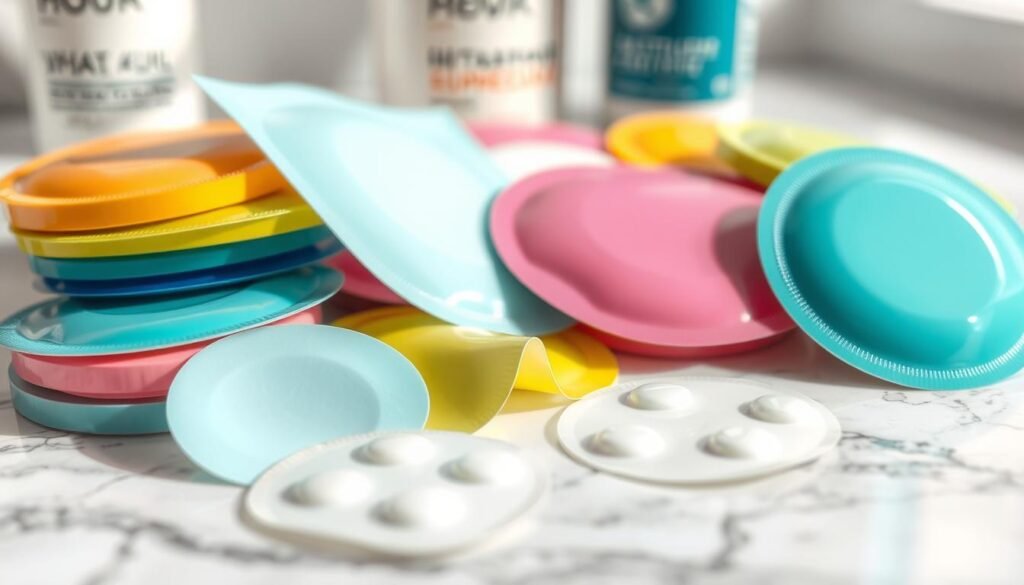
How Hydrocolloid Patches Work
Hydrocolloid patches are the most common type. They create a moist environment that helps in healing and protects the skin. The material absorbs excess fluid, oil, and impurities from the pimple, helping it to heal5.
Studies show that these patches are better at controlling redness, oiliness, dark spots, and sebum compared to surgical tape5. You can wear nonmedicated hydrocolloid patches for two to three days, changing them every day6. They work like a vacuum, removing dirt and oil that can cause breakouts6. For raised pimples with pus, a hydrocolloid bandage can help drain the fluid and flatten the blemish6.
Active Ingredients in Medicated Acne Patches
Some acne patches have active ingredients that target specific acne issues. Salicylic acid helps unclog pores and remove excess sebum. Tea tree extract, with its antibacterial and anti-inflammatory properties, is also used in some patches. However, patches with tea tree oil often have only one layer and can’t absorb fluid, which might cause the pimple to come back5.
Other ingredients include niacinamide, which improves skin texture and moisture, and benzoyl peroxide, an antiseptic that kills bacteria. Some patches also have hyaluronic acid to keep the skin hydrated6.
Types of Acne Patches: Hydrocolloid, Medicated, and Microneedling
There are three main types of acne patches: hydrocolloid, medicated, and microneedling. Hydrocolloid patches are great for pimples that have come to a head. Medicated patches target bacteria and inflammation. A study found that both hydrocolloid patches and surgical tape showed less severe acne after one week of treatment, with both groups changing the patch or tape every 2 days5.
Microneedling patches have tiny spikes that help deliver active ingredients deeper into the skin. They are perfect for blind pimples or deep, painful bumps6. These patches have become popular due to the rise in COVID masking and the self-care movement6.
While acne patches are good for spot treatment, they’re not for treating dirt from clogged pores, blackheads, or whiteheads. They also don’t work for cystic acne or preventing flare-ups5. For severe or persistent acne, you might need topical or oral medications from a doctor5.
Can I Put an Acne Patch on a Boil?
Acne patches are great for pimples, but they might not work for boils. Boils and pimples are different, needing different treatments.
Why Acne Patches May Not Be Effective for Boils
Acne patches are made for pimples with yellow pus7. They soak up sebum and dirt, treating the blemish7. But boils are caused by Staphylococcus aureus bacteria, not acne-causing bacteria8. This means acne patches might not work as well for boils.
Boils are bigger and hurt more than pimples. They need a different treatment. Ingredients like salicylic acid and benzoyl peroxide help with acne8. But they might not reach the boil’s root cause. Sometimes, antibiotics or a doctor’s help are needed for boils8.
Potential Risks of Using Acne Patches on Boils
Putting an acne patch on a boil could make skin irritation worse. The patch’s moisture could make the boil infection worse.
Boils are contagious and can spread to others8. Using an acne patch on a boil could spread bacteria. The patch might touch the boil’s infectious material.
It’s best to avoid using acne patches on boils. Instead, find treatments that target the boil’s cause and severity.
Proper Treatments for Boils
Treating boils often requires a mix of home remedies and medical help. Knowing the right care and when to see a doctor can help you heal boils effectively.

Home Remedies for Boil Care
Applying warm compresses to boils several times a day is a great home remedy9. It helps with drainage, pain, and swelling. Keeping the area clean with antibacterial soap and avoiding touching or squeezing the boil can stop the infection from spreading9. Over-the-counter pain relievers like ibuprofen can also help with discomfort.
Good hygiene, treating minor skin wounds, and a healthy diet and exercise can prevent boils9. Remember, boils are contagious and can spread through contact or shared items like towels or razors9.
When to Seek Medical Attention for Boils
Home remedies work well for small boils, but knowing when to see a doctor is key. If a boil is very painful, large, or doesn’t go away, or if you have a fever or other severe infection signs, get medical help10. A doctor might need to drain the boil or give antibiotics to treat the infection.
Antibiotics are especially important for face boils, multiple boils, or carbuncles11. They may be given orally, intravenously, or by injection to treat complications11. If the infection spreads through lymph vessels or you have fever, high pulse rate, low blood pressure, rapid breathing, or abnormal blood test results, antibiotics will likely be prescribed11.
Many bacteria causing boils are resistant to some antibiotics10. So, lab tests might be needed for recurring or treatment-resistant infections10. Family doctors or primary care providers usually start boil treatment, and may refer to dermatologists or infectious disease specialists if needed10.
Conclusion
Acne patches can help with pimples and scars from surgery12. But, they might not work for boils. Boils are deeper infections needing a different treatment13. Using patches on boils might not solve the problem13.
Only 3 out of 100 people with skin infections have boils14. These can appear quickly and take weeks to heal14. Keeping your skin clean and not picking at it is key.
If you’re not sure about a boil, see a dermatologist or doctor14. They can give you the right advice. This might include home treatments or draining the boil14.
Knowing how to care for your skin is important14. By treating acne and boils right, you can have better skin. Use gentle cleansers, moisturize, and protect from the sun. This helps your skin heal and stay healthy.
FAQ
What is the difference between acne and boils?
How do acne patches work?
Can I use an acne patch on a boil?
What are some home remedies for treating boils?
When should I seek medical attention for a boil?
Source Links
- Boils – https://www.healthdirect.gov.au/boils
- What You Need to Know About Treatment for Boils – https://www.healthline.com/health/how-to-get-rid-of-a-boil
- Boil vs. Pimple: Tips for Identification – https://www.healthline.com/health/boil-vs-pimple
- Boil vs. pimple: How to tell the difference – https://www.medicalnewstoday.com/articles/321270
- What Are Hydrocolloid Patches for Pimples? – https://www.webmd.com/skin-problems-and-treatments/acne/what-are-hydrocolloid-patches-for-pimples
- Pimple Patches and What They Offer – American Chemical Society – https://www.acs.org/education/chemmatters/articles/pimple-patches-and-what-they-offer.html
- Pimple Patch 101: The Do’s and Don’ts of Pimple Patches – https://wishtrend.com/blogs/glam/pimple-patch-101-the-dos-and-donts-of-pimple-patches?srsltid=AfmBOorHPfIAGw5RN2IiZy5ZhaJpyEIIQw4ng5SvrSJdqiy5m54lTTym
- Boil vs. Pimple: Here’s How to Tell Them Apart – https://www.instyle.com/beauty/skin/skin-concerns/pimple-vs-boil
- Boils: Treatments, Causes, and Symptoms – https://www.webmd.com/skin-problems-and-treatments/boils
- Boils and carbuncles-Boils and carbuncles – Diagnosis & treatment – Mayo Clinic – https://www.mayoclinic.org/diseases-conditions/boils-and-carbuncles/diagnosis-treatment/drc-20353776
- Boils and carbuncles: Learn More – How are boils treated? – InformedHealth.org – https://www.ncbi.nlm.nih.gov/books/NBK513136/
- What Is in Hydrocolloid Bandages, and How Are They Used? – https://www.healthline.com/health/what-is-in-hydrocolloid-bandages
- Hydrocolloid dressings, bandages, and patches – https://www.medicalnewstoday.com/articles/hydrocolloid
- Overview: Boils and carbuncles – InformedHealth.org – https://www.ncbi.nlm.nih.gov/books/NBK513141/


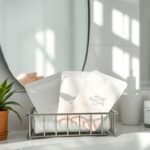
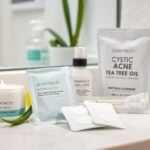


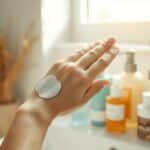
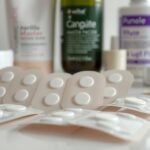
Interesting read but honestly, why not just pop boils like a good old fashioned pimple? Might be more satisfying! Just a thought.
Anyone else think that acne patches might actually make boils worse? Like, arent they meant for acne, not boils?
Just throwing this out there, but isnt using acne patch on a boil like using duct tape on a broken pipe?
Honestly guys, why cant we just pop a boil? Its just like a massive zit, right? Lets not overcomplicate things!
Boils vs acne – arent they both just skins way of saying clean me? Why the fuss about the difference, folks?
Interesting read, but how about boils from allergic reactions? Acne patches wont do much there, right? Worth exploring, I think.
Interesting article, but why not discuss natural remedies? Not everyone wants to slap a patch on their skin, right? Lets think outside the box!
Though the article was insightful, isnt it a bit risky to use acne patches on boils without consulting a dermatologist first? Just a thought.
Interesting read but arent boils and acne both skin issues? Why cant we use acne patches on boils? Seems like a marketing trick!
Interesting read, but isnt popping boils a big no-no? I thought acne patches were just for pimples and blackheads. Thoughts?
Interesting read but shouldnt we focus more on preventing skin issues rather than quick fixes like acne patches on boils? Just a thought!
Prevention might be ideal, but not always feasible. Quick fixes serve an essential purpose too!